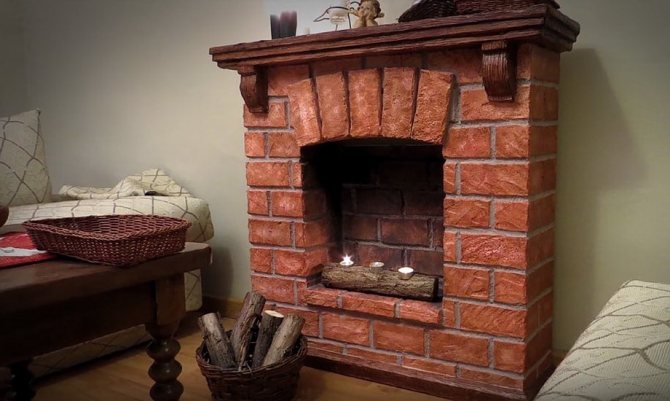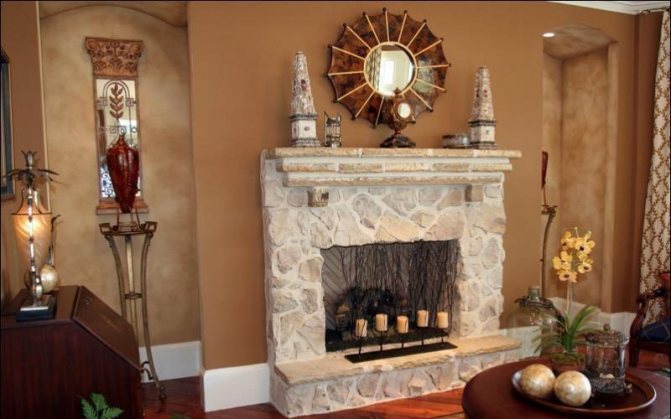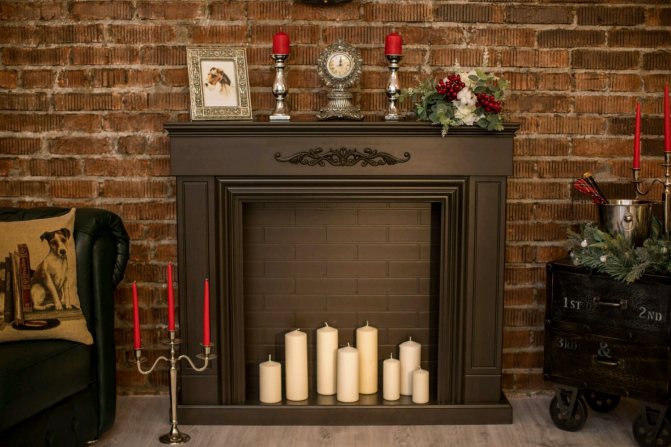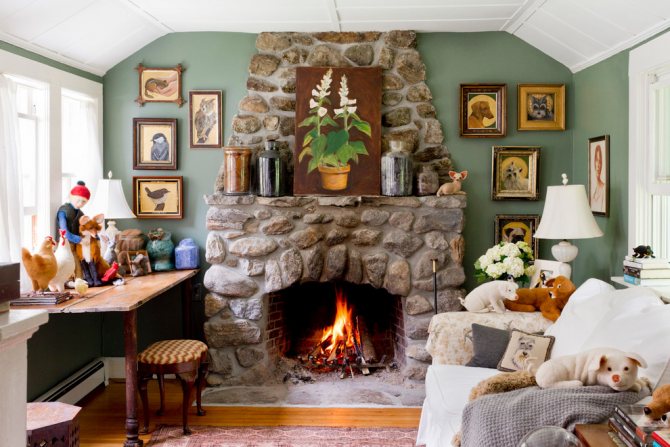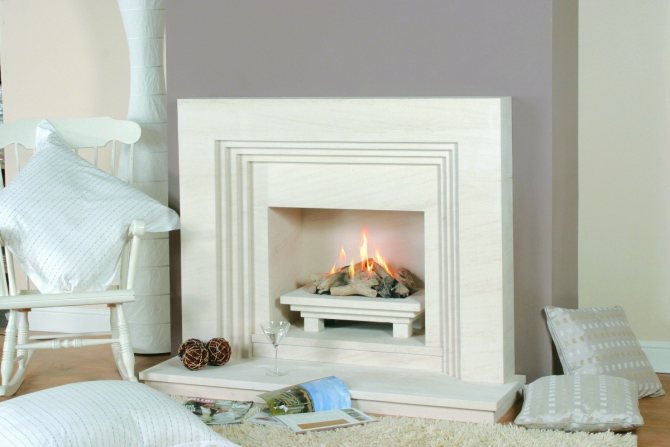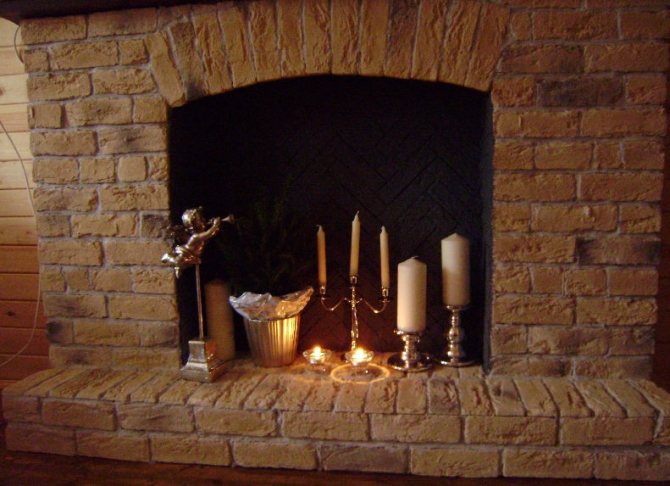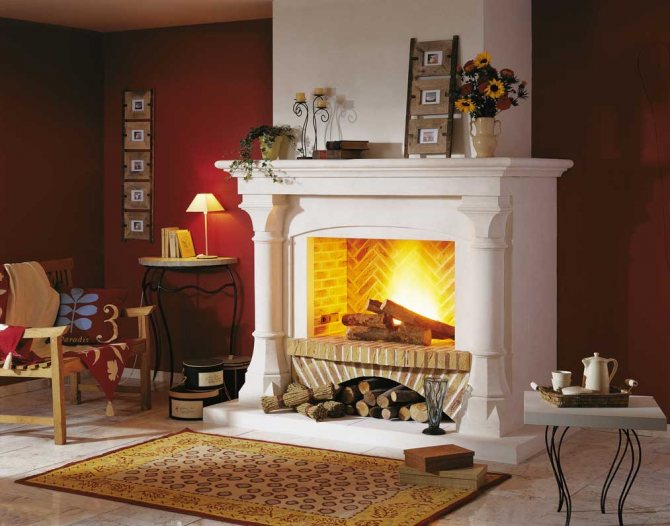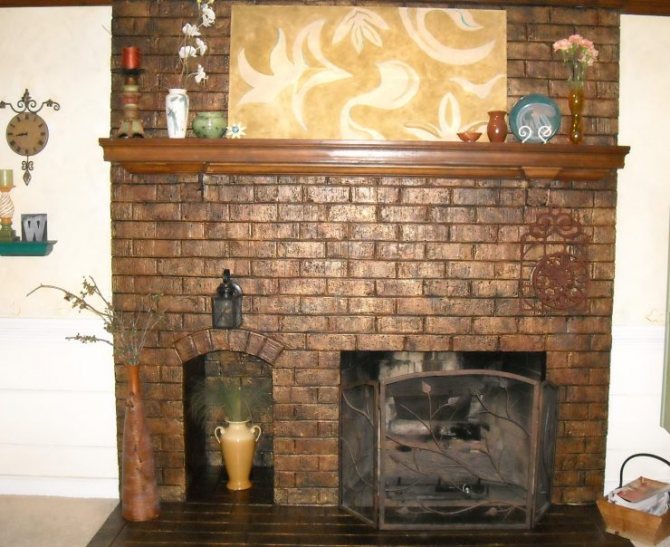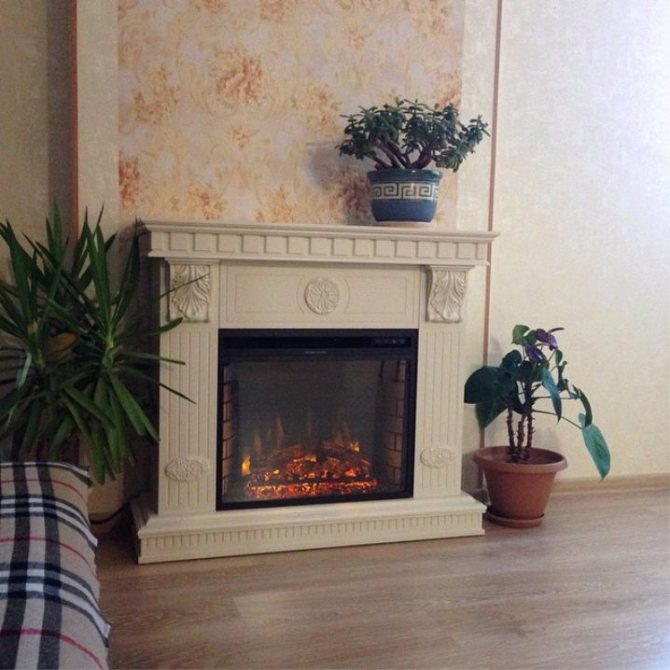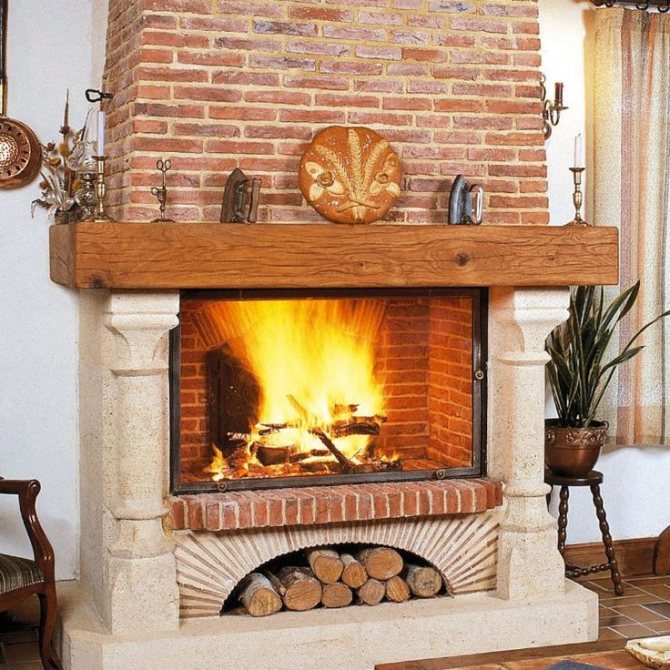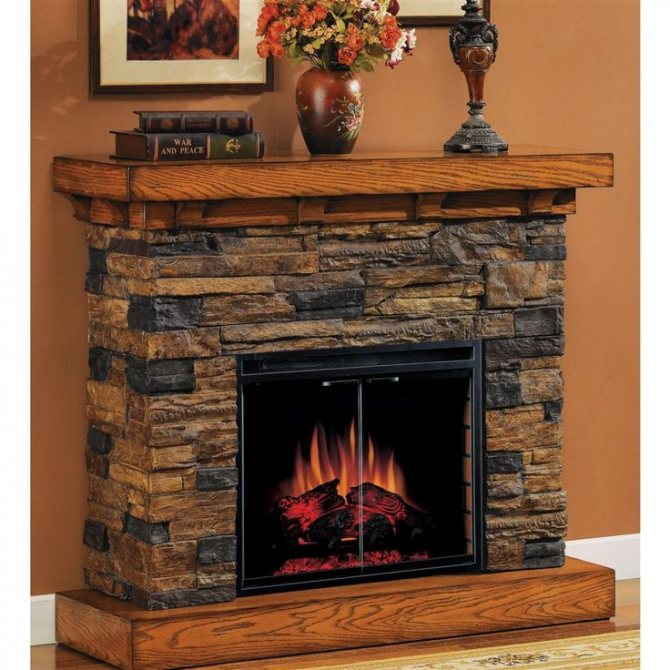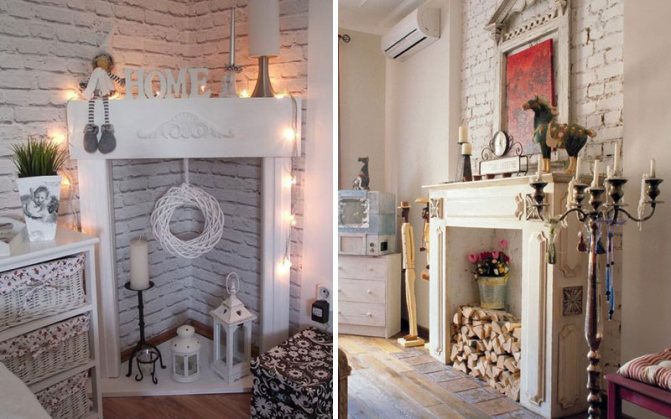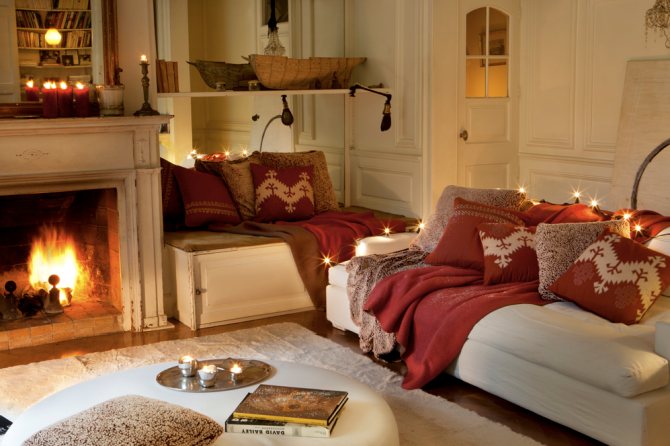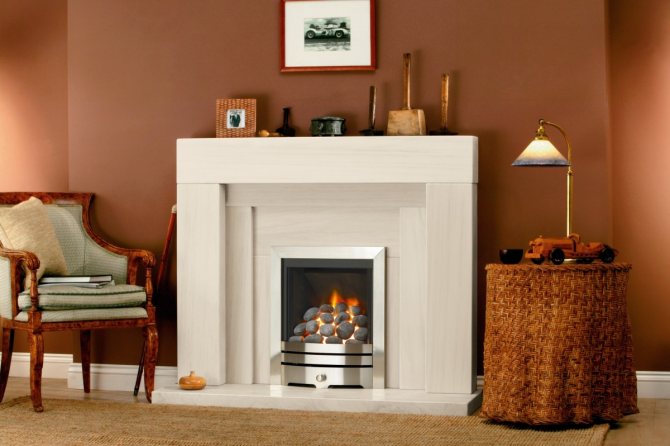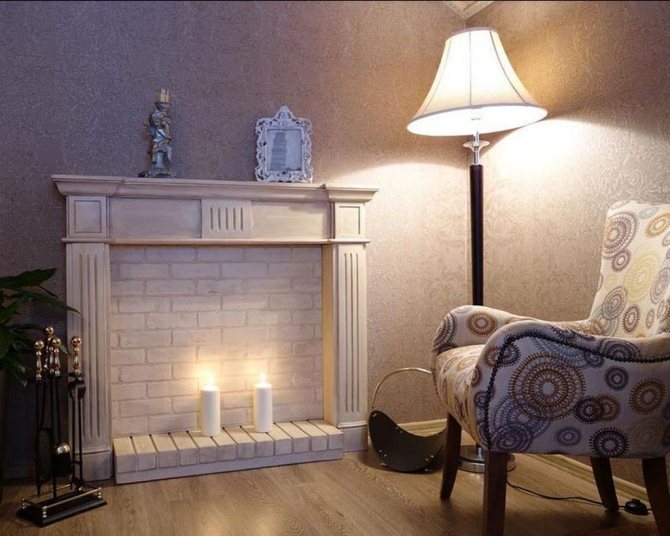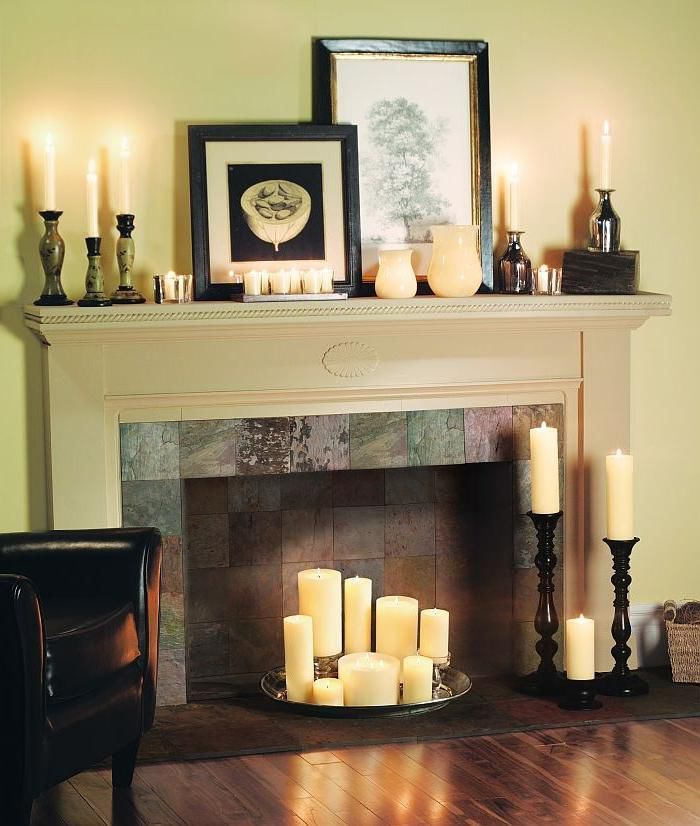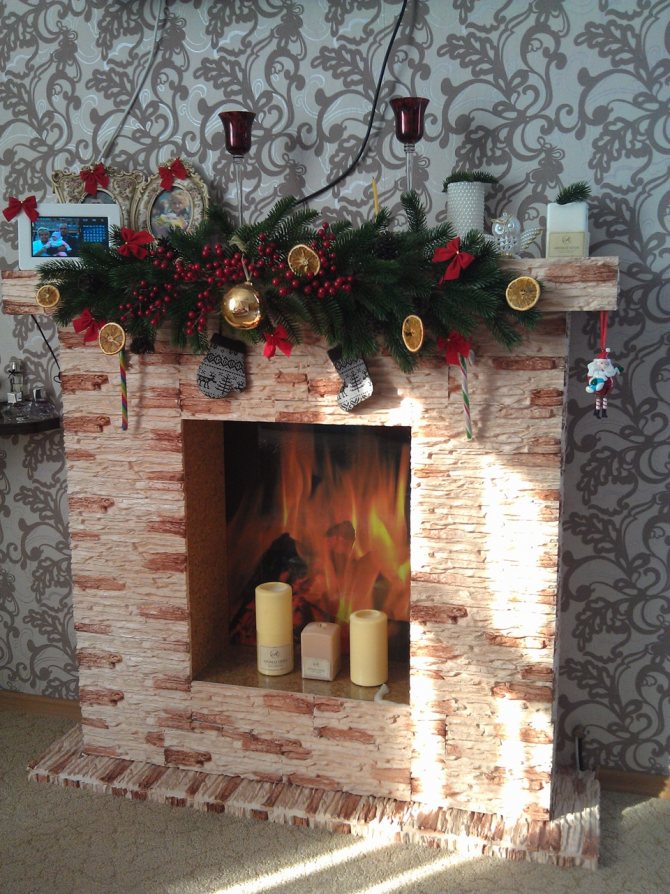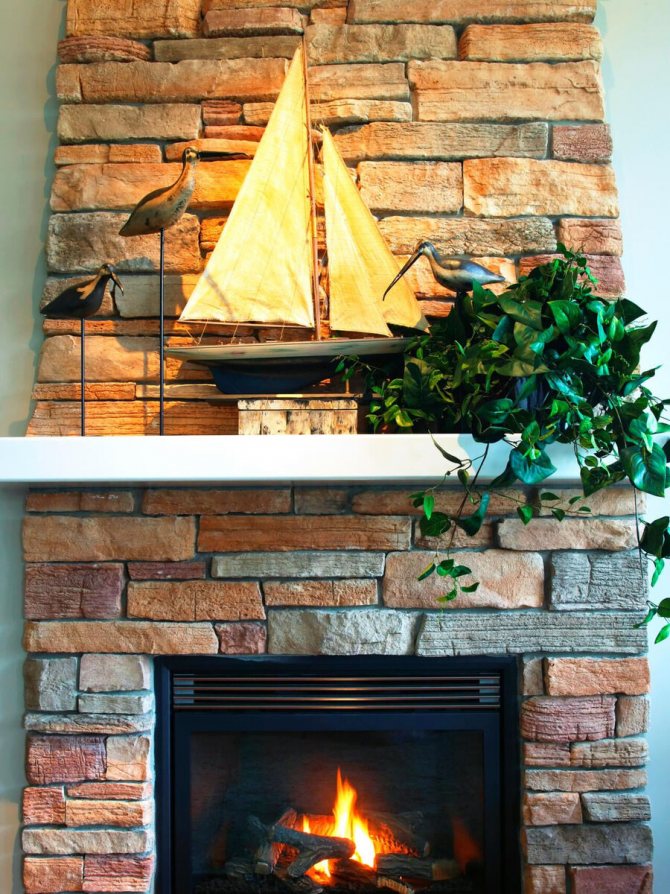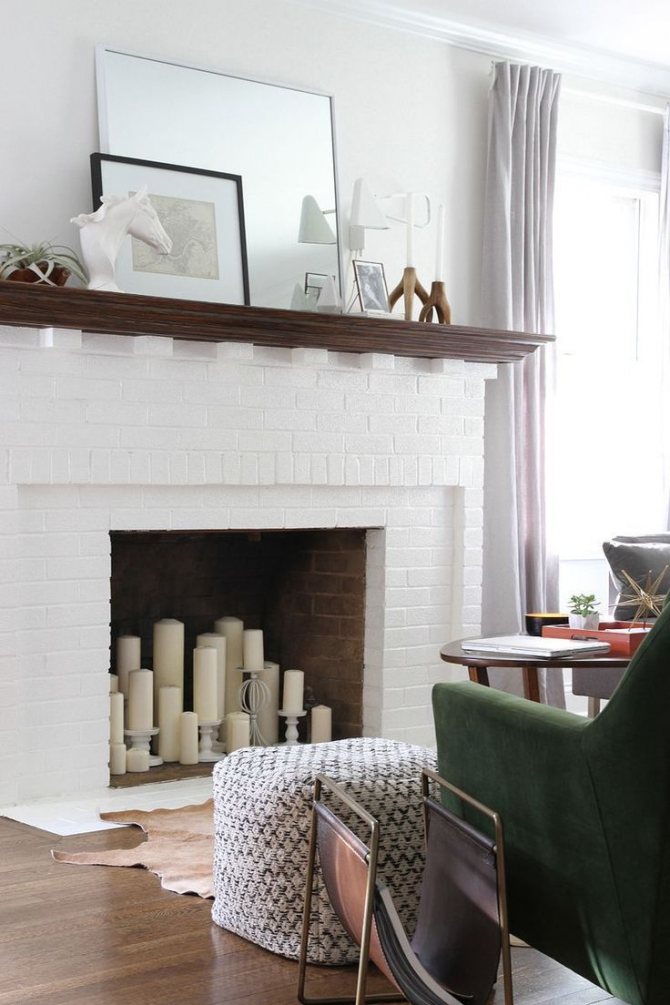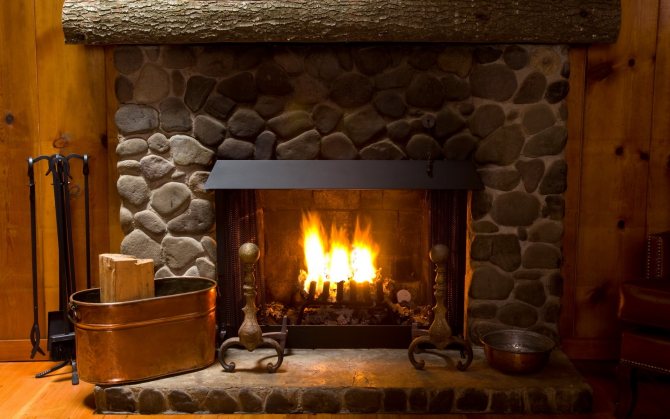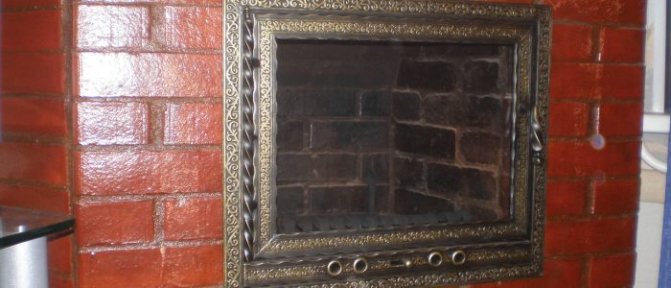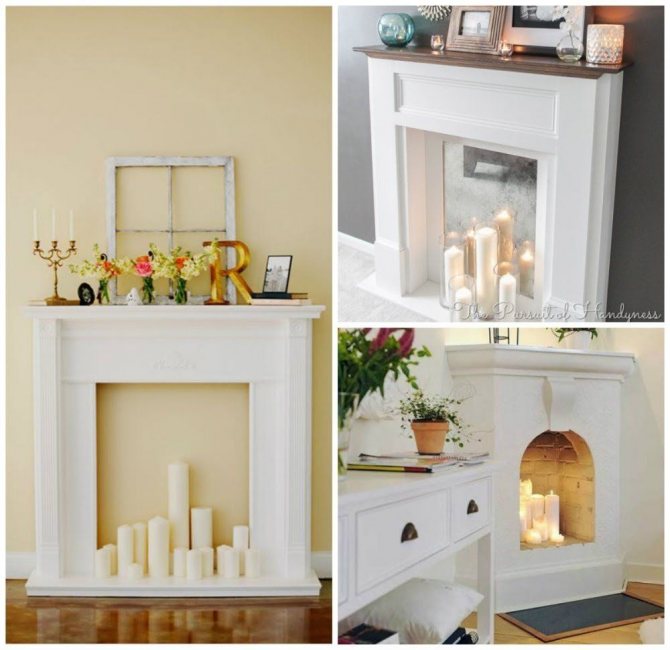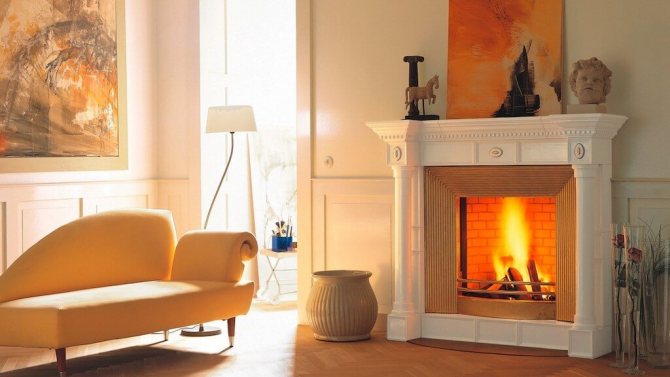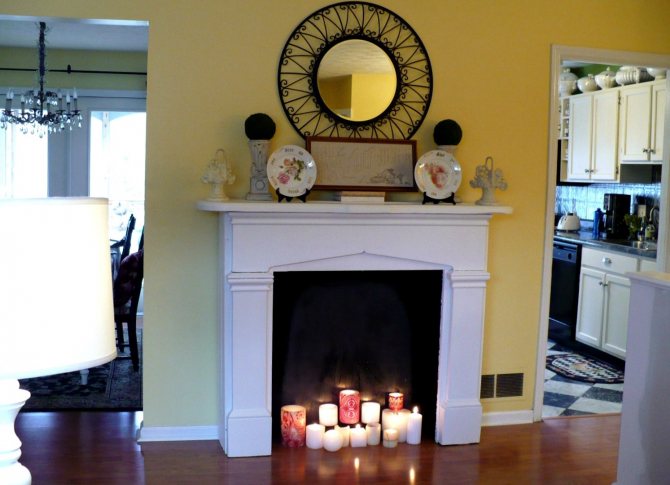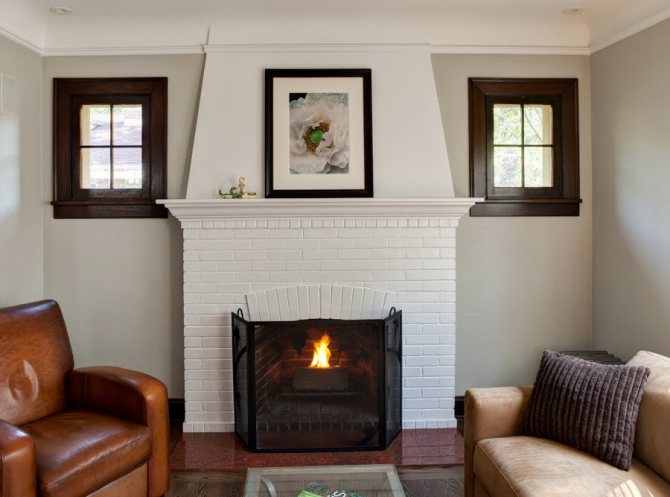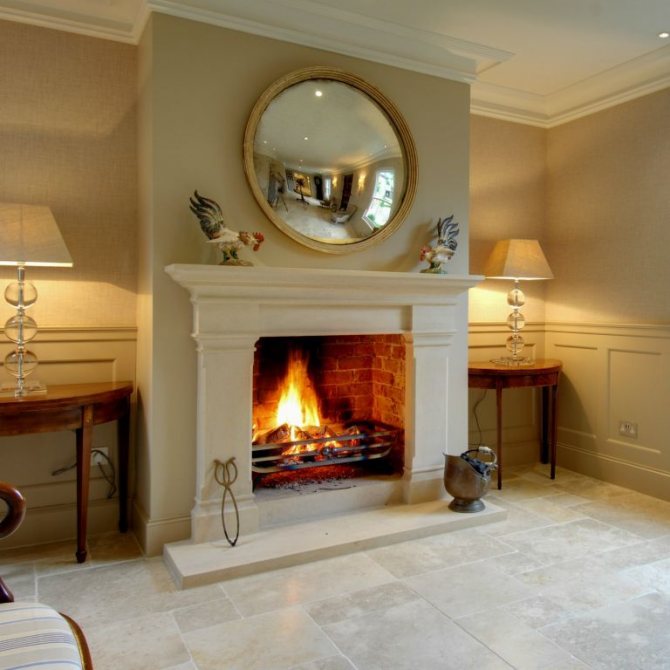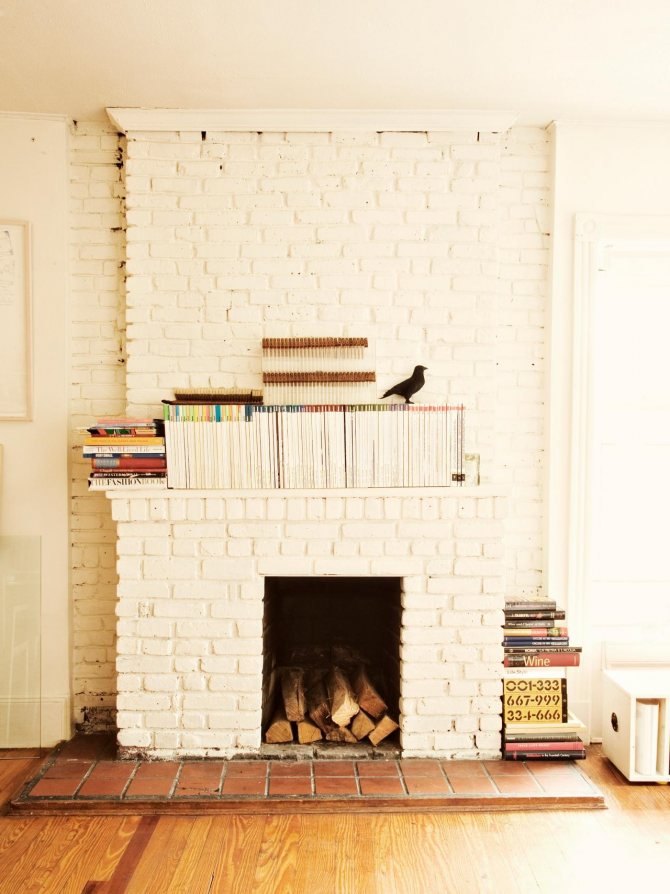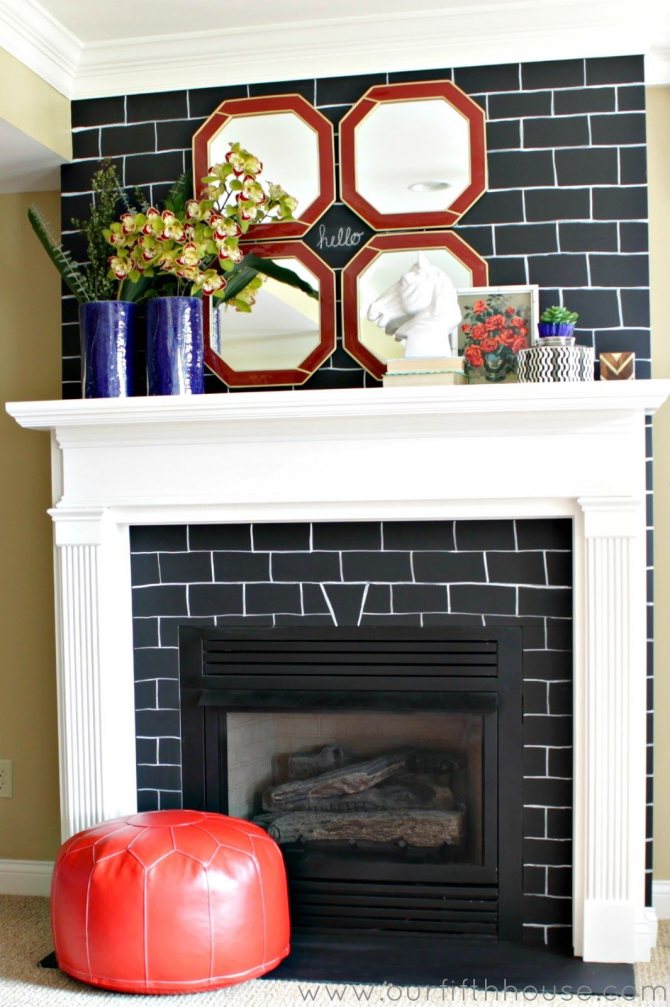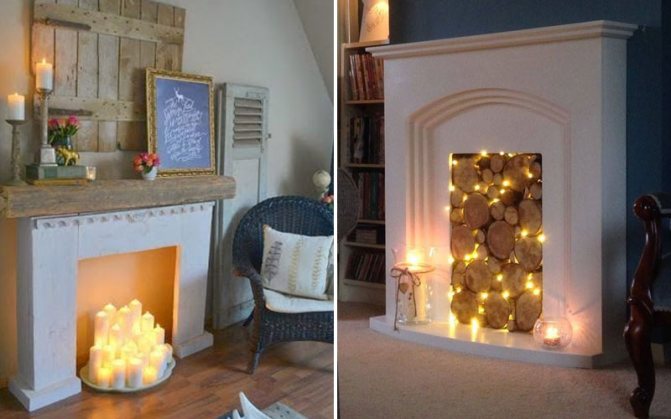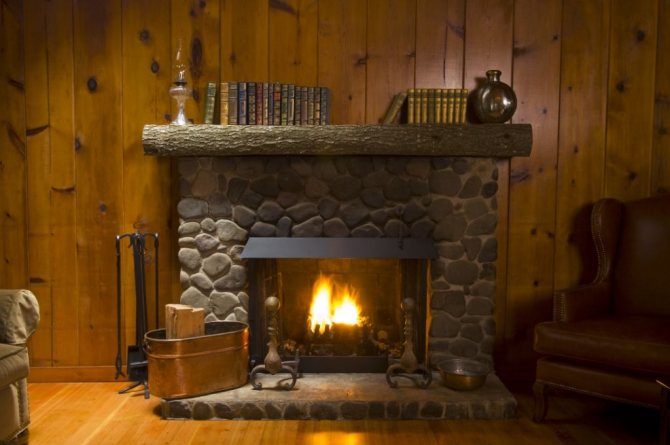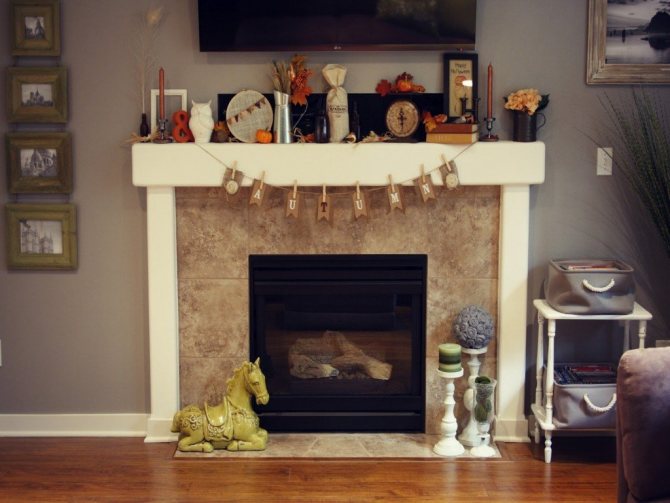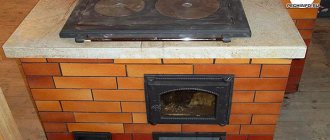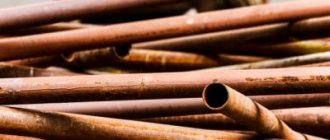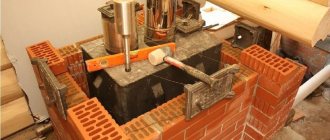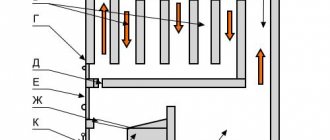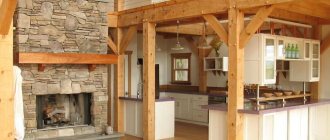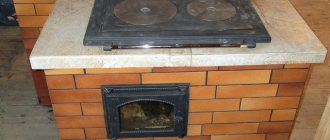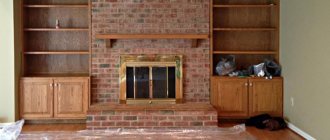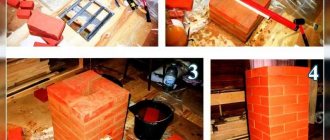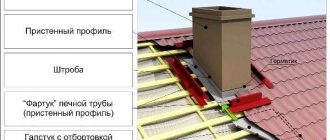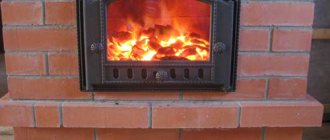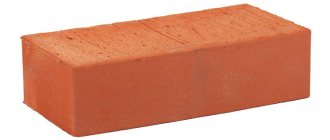In the villages, the Russian stove has long been treated with ordinary whitewash, giving it a neat look.
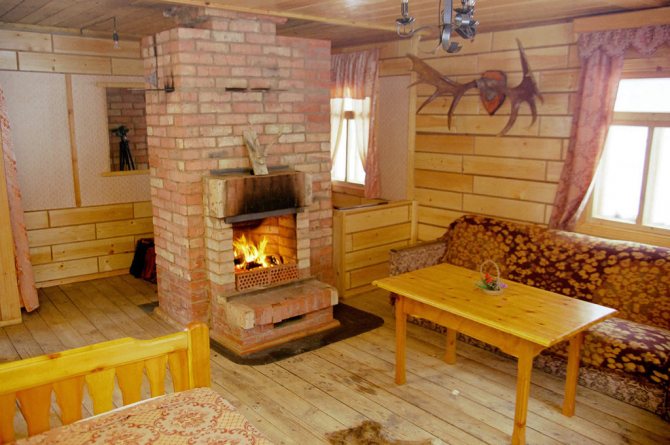
It is believed that the most popular styles of stove decoration are Provence and Country.
In wealthy houses, it was customary to lay out the stove with tiles.
Nowadays, the choice of building materials is so wide that it is sometimes difficult to give preference to something. Many do not know what to do if they inherited an old stove from an old village house or bought such a stove together with the household. With such a huge number of finishing options, many are interested in the question of how to update a sauna stove or paint a fireplace correctly. And if the stove is made of bricks, how to paint it?
If the stove is built correctly, then it is able to give the room at least half of its heat. In addition, the amount of heat radiated into the room directly depends on the material with which the surface is covered. With a smooth surface of the structure, less heat is given off compared to a rough one. If you paint a brick sauna stove with oil or enamel paint, it will radiate heat much better. The darker the color, the more intense the heat dissipation will be.
What paints to use
The principle of operation of the oven.
Decorative qualities are of great importance, but some peculiarities should be taken into account. For example, a shiny surface is much less capable of giving off heat. In this regard, it is better to refuse to cover the oven with glossy paints, for example, aluminum. If the stove is folded in accordance with all the rules, there is a sufficient thickness of the walls of the hearth, then the heating of the outer side can reach 80 degrees. Many synthetic compounds can withstand this temperature. These include pentaphthalic paints, nitro paints and others.
As for many oil paints, which are based on natural linseed oil, during operation they darken, especially in those points that are the hottest. There are many heat-resistant paints on the market that are ideal for painting fireplaces and stoves. The downside is that the choice of colors for such paints is quite limited. If you are not satisfied with this line of paints and the color scheme does not match the interior, try using latex paint to paint the stove. Before applying it, it is necessary to treat the surface with a rough primer.
Where to start painting
Having chosen a heat-resistant paint, do not rush to apply it to a brick or metal surface. If the packaging indicates preparatory steps, be sure to follow the recommendations. Basically, before painting, the following actions are required:
- cleaning the structure from fat, salt, old coating;
- removing rust with sandpaper or sandblasting;
- drying and thorough washing;
- degreasing with a solvent and painting in 6-7 hours (but no later than in a day).
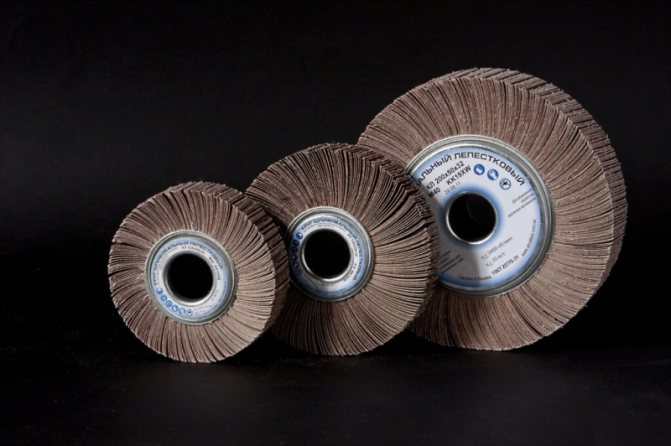

Cleaning wheel for grinder
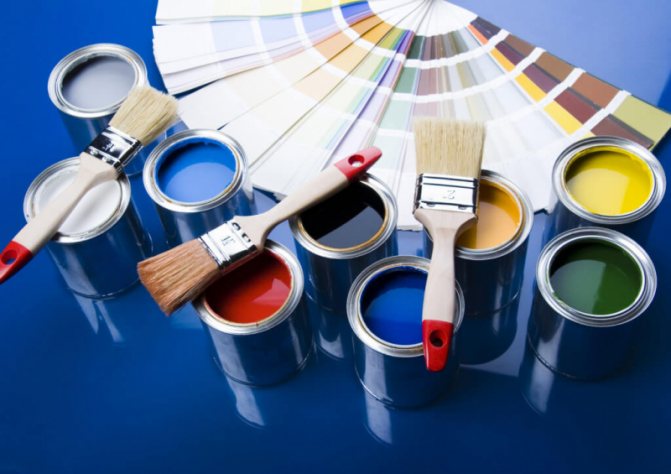

Palette of colors
If it is necessary to apply a second coat, wait until the previous coat is completely dry and only then proceed with the surface treatment. Thermal paint should be of high quality: look at the date of manufacture, composition, name, address of the manufacturer. If some information is missing, look for another product, otherwise you risk causing harm to your health.
Modern oven design
Furnace device.
In the modern design of the fireplace and stove, designers attach great importance to color solutions.In addition, now the prevailing trends are aimed at naturalizing the elements and details that make up the interior. One of the most stylish elements is the fireplace, as well as the Russian stove. Rustic styles such as Provence and Country are extremely popular these days. For fans of these styles, there is an opportunity to make the Russian stove a real masterpiece, and the fireplace will perfectly complement the interior. What is required for this?
You can use clear paint and a unique element will be provided to your home. Before you start painting a brick oven in this way, you need to prepare it appropriately, that is, give it an aesthetic look. If the outer surface has dents, potholes and other defects are found, then they need to be filled with putty. To make your own putty, you need to take latex paint and add brick flour to it.
Popular brands of paints
Heat-resistant enamel Elcon.
To paint a brick fireplace or stove in the house, you can use the varnish of the Russian brand Elcon. With its help, it is easy to give the stone a matte or semi-glossy look. The effect is determined by the number of layers applied. The varnish is available in aerosol cans. One is enough for processing 2 m² of the surface. The coating dries in 3 hours, it takes 3 days for the varnish to fully cure if the room temperature is maintained.
Elcon heat-resistant paint is suitable for machine tinting. The black composition has the highest heat resistance. It can withstand temperatures up to +1000 ° C. Pigmentation of the paint and varnish material reduces its heat resistance characteristics. After tinting, the paints can be used at temperatures up to +600 ° C. They can be used to cover ceramic surfaces, metal boilers and fireplace grates. Paint consumption is determined by the number of layers applied and the structure of the surface to be treated.
Cetra KO-85 Russian varnish is produced in cans. The 0.8 liter capacity is enough to cover 5 m² of surface in one layer. The varnish can withstand temperatures of +250 ° C. Since the composition is made on the basis of solvents and synthetic resins, it has a pungent odor that disappears after heat hardening of the painted surface. When working with this with varnish, it is necessary to ensure good ventilation of the room.
Furnace surface treatment before painting
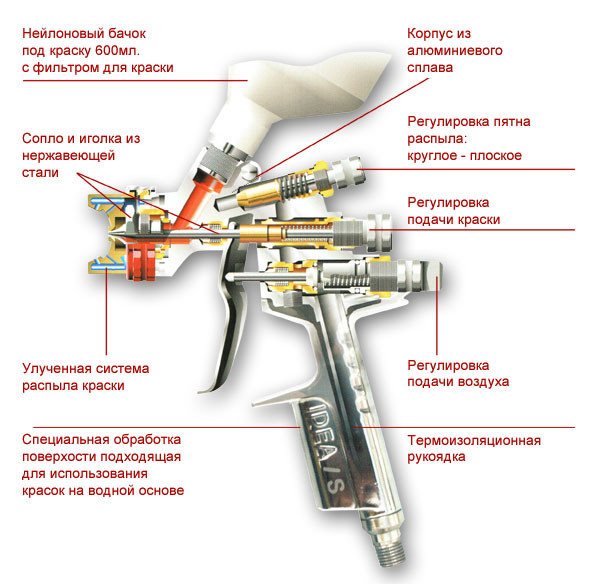

Spray gun device diagram.
How is the surface of the stove you are going to paint to be reanimated? For this purpose, an ordinary red brick is taken and flour is rubbed out of it. Add 10 pre-whipped proteins and milk to the resulting powder. The mass that you get should have the consistency of thick sour cream. The mixture should be applied with a brush to the surface of the oven while it is still warm. The entire outer surface can be treated with a similar composition. It will have a solid red color. In addition, the superimposed layer has qualities such as abrasion and heat resistance.
The next step in the process of restoring a stove or fireplace is coating the surface with linseed oil, due to which a beautiful dark red hue is achieved. You should be aware that the surface treated in this way will be matte. If you want shine, use synthetic or oil varnishes. The presence of a shiny surface ensures painting with latex paint. This type is widely recommended by experts, since the surface has sufficient density and roughness, which provides good heat radiation.
Selection and use rules
In order to choose the right paint, it is necessary to determine the maximum temperature of the surface on which it will be applied. You also need to calculate the area and make a choice between a spray in a can and a liquid consistency in a can.But there are still some rules to be aware of.
Specific nuances in terminology
Many sellers in their advertising campaigns are very frivolous about the terminology adopted for formulations that can be applied to surfaces with high temperatures. There is no normatively established gradation according to the correspondence of the name of the composition and its maximum permissible heating temperature.
However, three well-established terms are commonly used:
- high temperature;
- heat resistant;
- heat resistant.
High-temperature paints for metal include compositions that can withstand prolonged heating of the surface up to 2000C. They are used to treat radiators and heating pipes, brick stoves and fireplaces. In addition, they are suitable for automotive parts such as engine, muffler and exhaust system.
Water jacket of a metal furnace. Outside, it does not heat up above the temperature of the coolant, so high-temperature paint can be used to treat its surface
Heat-resistant compounds are used for surfaces with temperatures up to 6500C.
Such paints are used for the following metal objects:
- sides and bottom of ovens;
- braziers;
- combustion products exhaust pipes;
- the place where the pipes of the water circuit are connected to the furnace or boiler.
Heat-resistant paints and enamels often contain pigments that give them color, so they can be used to create original interior design solutions.
Heat-resistant paint is intended for coating surfaces that are heated to temperatures over 6500C. First of all, these are hobs and furnaces of stoves, as well as grates of wood-burning stoves and fireplaces.
Some types of thermal paints have an additional feature - fire resistance. This means that the painted surface can be in direct contact with the flame. From household metal objects, this is true for the fireplace grate and the inside of the barbecue.
Thermal hardening theory and practice
Heat-resistant paint is inherently heat-resistant enamel. A thermal quenching procedure must be followed to create an impermeable barrier. In the process of heating the surface with the composition applied to it, the layers polymerize, after which air access to the painted metal stops.
Sometimes a colorless varnish is applied to protect metal products. This type of coating also requires thermal hardening.
It is after thermal hardening that neither oxygen, which causes the rusting process, nor moisture can penetrate under the enamel. Prior to that, the paint has only a decorative and, partially, protective function against physical impact.
Moreover, after the creation of an impermeable layer, the evaporation of substances contained in the paint into the air of the room stops. Therefore, ideally, it is necessary to wait for the specified period of complete drying, which is indicated on the label or in the instructions, and then immediately carry out the thermal hardening procedure.
Usually the temperature at which the enamel cures is 200-2500C. This leads to one common mistake, which is often made by people who have leftovers after painting the stove.
It is impossible to apply a heat-resistant compound, which requires heat hardening, on radiators and heating pipes, since the degree of their heating is insufficient to complete the process. For mildly hot objects, use ordinary high temperature paint.
Theoretically, the thermal hardening process should take place at a constant temperature for 30-60 minutes. However, in practice, it is unrealistic to achieve such “laboratory” conditions.
Therefore, wood stoves, barbecues and fireplaces are not flooded at full capacity and gradually increase their heating. Typically, the test run takes 1.5-2 hours.Another option is heating with an industrial hair dryer.
The most spectacular fireplace colors
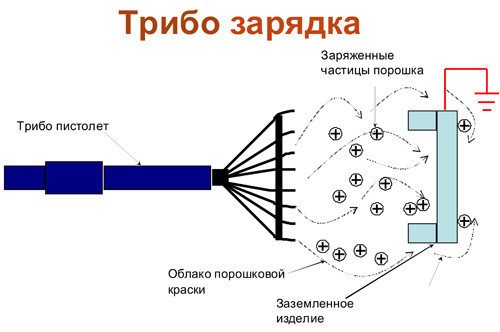

Equipment for powder coating of the oven.
Although the surface of the brick oven is quite dense, after drying, the latex paint retains its elasticity, thus preventing cracking. A fireplace in a private house or in the country, like a stove, is a catchy element of the interior. Therefore, painting or plastering these structures requires maximum responsibility. If high quality brick was used in the construction of the fireplace, then when painting it is much easier to emphasize the beauty of the material. According to experts, paint that imitates the color of old bricks looks great. In this case, it can be different shades of red and crimson.
If you are painting a fireplace, then silicone paints will do. Paints in aerosols are especially convenient. To liquefy silicone paints, solvent 646 or turpentine is used. Dry gouache can be added to correct the color to the desired shade. For this, liquid gouache is pre-dried and then ground into a fine, homogeneous powder. In order for the color of the fireplace to be of high quality, it is necessary to cover it in several layers. At the same time, remember that the layers must be thin and evenly applied. Otherwise, smudges and imperfections can occur, which will spoil all your work.
Requirements for stove paint compositions
The main factor determining the requirements for paints and varnishes for furnace devices is their operation at high temperatures.
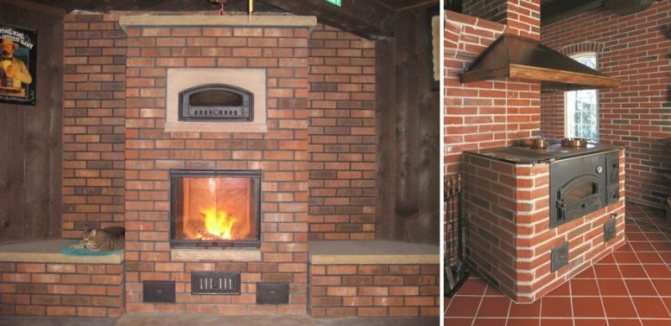

Brick heaters: on the left - without painting, on the right - painted.
According to the degree of resistance to high temperatures, paint and varnish coatings are subdivided (downward) into refractory, heat-resistant and heat-resistant.
Refractory protective paint for furnaces is used to protect metal components of industrial units from corrosion when exposed to open flames, aggressive combustion products and can withstand temperatures up to 1800 ° C. Such materials are expensive, but they have not found widespread use in everyday life for another reason - their high potential for heat resistance when used in devices for heating homes remains unclaimed.
Heat-resistant paint for household stoves is used to coat metal parts of brick heaters and steel stove casings. The temperature range for the use of heat-resistant paintwork materials, depending on the type, is 600 - 1000 0С.
For painting stone casings of stove heaters and chimneys (brick, mortar of joints), heat-resistant paint for stoves and fireplaces is used, intended for application on surfaces, the operating temperature of which is 200-400 ° C. In addition to paints, this subgroup also includes varnishes with a temperature resistance of 250-450 ° C.
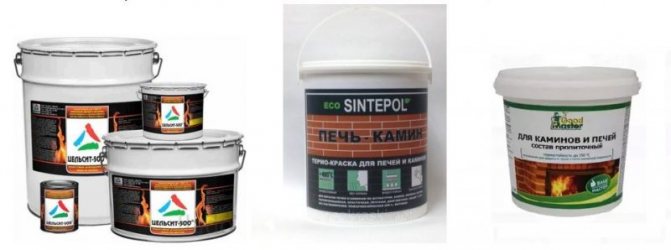

Heat-resistant paints and varnishes in order of increasing resistance to temperature - from left to right.
In addition to resistance to high temperatures, heat-resistant paint for oven bricks must have other characteristics:
- safety - when heated, do not emit harmful substances into the air;
- sufficient thermal conductivity - do not interfere with heat exchange between the surface of the furnace and the air;
- resistance to household chemicals - maintain physical properties and aesthetics after repeated daily care procedures;
- elasticity - does not form cracks at temperature extremes;
- hiding power - to provide a uniform coverage when applying no more than three coats.
The range of heat-resistant paint compositions offered today by domestic and foreign manufacturers is wide enough to satisfy the consumer's need in any situation - whether to give the heater brick a different color that fits optimally into the interior, or to create a transparent protective layer while preserving the natural look of the masonry.
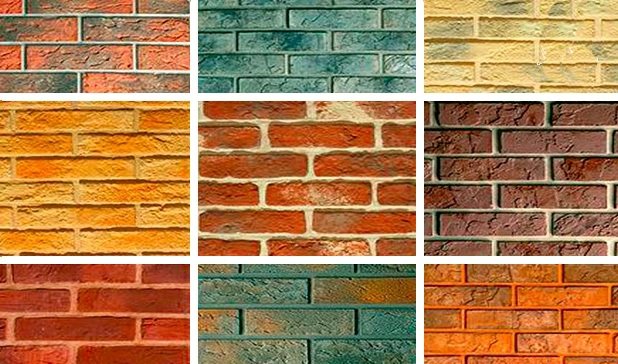

Fragments of brickwork, painted in various ways
Let us consider these groups in more detail using the example of specific heat-resistant coatings.
These solutions are high-quality mixtures (paints, enamels, varnishes) made on the basis of organic resins and used, depending on the characteristics, both for exterior finishing works (building facades) and for painting interior elements of the interior, including stoves and fireplaces.
To cover brick oven devices, heat-resistant organosilicon solutions are used (not to be confused with moderately heat-resistant paint used for exterior finishing works and withstanding temperatures up to 100 ° C).
Finishing the brick body of the heater with organosilicon compounds is a widespread solution due to the availability of the price range and the following advantages of the material:
- high degree of adhesion to surfaces of any texture;
- the strength of the resulting shell;
- moisture resistance;
- durability;
- high temperature resistance combined with elasticity (200-250 heating-cooling cycles).
The disadvantage of the organosilicon heat-resistant coating can be attributed to the limited color range of this particular type of solutions, due to the chemical composition and place of application.
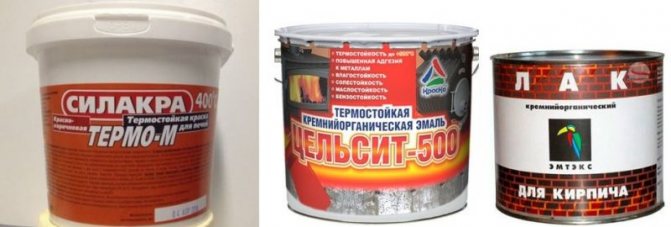

Organosilicon compounds for decoration of brick bodies of stoves and fireplaces: paint, enamel, varnish.
Application to the base is carried out with a brush, roller or spray gun after surface preparation - cleaning from dust and priming with a heat-resistant primer, for example, a solution of liquid glass, phosphogrunt or G-77.
Compliance with the instructions for using the oven paint on the packaging is a guarantee of a high-quality and durable coating.
This group represents dispersion (solid in liquid) paints and varnishes made of acrylates, made on a water or hydrocarbon basis.
Both of these types of acrylic mixtures are suitable for painting the brick of a stove or fireplace, but in everyday life water-dispersion paints are more often used, calculated, depending on the variety, for an operating temperature of 200 - 400 ° C.
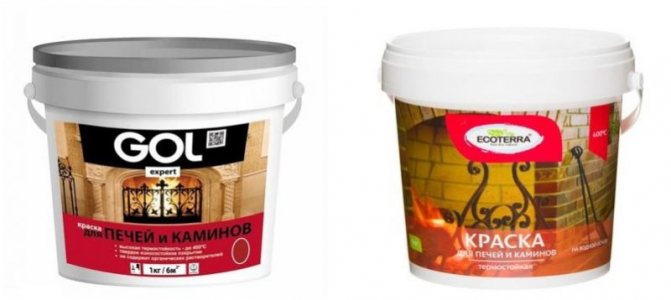

Water-dispersive acrylic painting compounds for stoves and fireplaces
These heat-resistant paints and varnishes penetrate deeply into the pores of the substrate to be coated and create a strong film on it, which has led to their classification as enamels.
They are applied to the surface with a brush, paint roller or spray gun after thorough mixing and adding water to the desired consistency, the required number of layers is two, the drying time of each layer is from 24 hours, there are no odors during painting.
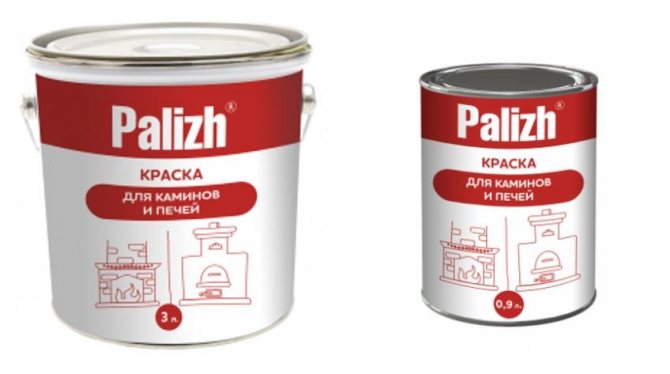

Water-dispersive acrylic paint for painting brick bodies of stoves and fireplaces
The color gamut of acrylic paints is wide, but there are no juicy tones, and the effect of the addition of tinting compositions is short-lived.
Alkyd emulsions
The root "alkyd" of these paintwork materials is formed by the fusion of two definitions: alcohol and acid (acid).
The mandatory composition of these emulsion (liquid in liquid) paints includes alkyd varnish, dye and a solvent, usually white spirit. Depending on the type of paintwork materials, the solution may contain marble or granite dust, antifungal and fire-fighting additives.
We offer you to familiarize yourself with How to process the steam room inside
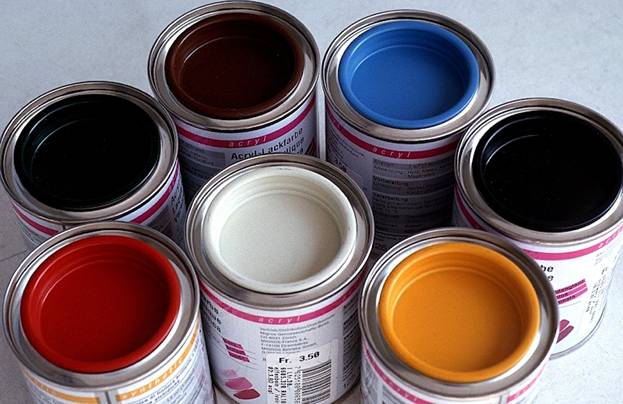

Vibrance of colors of alkyd paint solutions
Alkyd emulsion can be used to coat brick heaters if the surface temperature does not rise above 100 ° C. These paintwork materials will delight you with a variety and richness of colors, but the solution film hardened after application is much less elastic than that of acrylic compounds, therefore it does not withstand temperature expansion of the base and by the end of the year of operation it is covered with a web of small cracks, requiring replacement of the finish.
The heat resistance of alkyd paints is increased by adding aluminum powder to them, but such compositions are unsuitable for painting bricks.
Today, even in modern houses, you can find a classic Russian stove. But what if the old stove structure spoils the appearance of the room?
There is no better solution than to paint the stove in the house with special paint.
Selection of paint
Some time ago, when the stove was in every private house, there were few options for its finishing. Almost always, the furnaces were coated with a chalk mixture or lime.
In the first method, when using chalk, the masonry stained everything that was nearby. Therefore, lime was a better option. Both options are outdated at the moment - the modern construction market offers many products that allow you to finish the stove with your own hands.
A Russian stove, if folded correctly, from the outside can heat up to a temperature of 80 degrees - many dyes can withstand such heat, but some lend themselves to destruction under the onslaught of temperature.
Pay attention! Many paints based on natural linseed oil, according to manufacturers, can withstand high temperatures - in fact, such compositions "do not fall off", but become covered with dark spots in especially hot places.
Blackened stove surface
Only these substances are able to withstand high temperatures without changing their properties:
- Latex - compounds, the properties of which are elastic. Therefore, when heated, they can expand, but after that they take on their original form.
- Silicate - paints based on liquid glass, thanks to which this composition is not only resistant to high temperatures, but also has a beneficial effect on the long-term preservation of heat in the room.
- Silicon organic - paints that are specially designed for finishing stoves and fireplaces. The heat resistance declared by the manufacturers is 600 degrees. At the moment, organosilicon substances are the best option for painting a furnace, but the price of such compositions is quite high.
- Water-based paints are also a good option. When heated, the water in the base of the substance evaporates - and the surface is covered with a durable, temperature-resistant layer of coloring filler.
Heat-resistant, heat-resistant, heat-resistant paint for finishing ovens.
Note! It is not recommended to use oil-based paints - when heated, the oil begins to evaporate and release harmful substances into oxygen. Also, when the oven is painted with oil paint, there will always be a smoldering smell in the room.
Previously, when heat-resistant paints did not exist, ovens were covered with self-prepared substances. Almost all of them were based on chalk or lime.
Features of the painting of the furnace
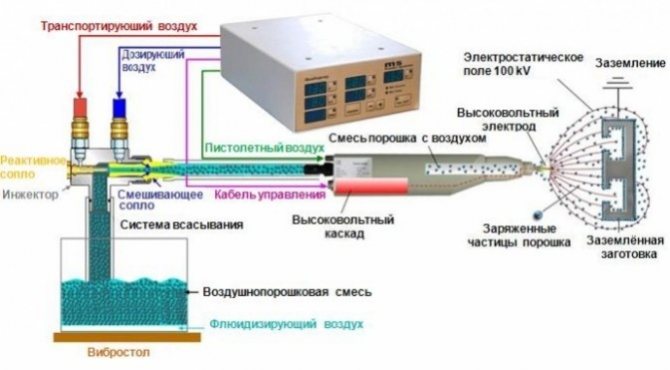

Powder coating technology.
To provide the most decorative appearance of the stove, you can paint the joints between the bricks in a light tone. For example, sandy shades, yellowish and even white, work well. You can apply a composition such as a mixture of turpentine and varnish PF-283 in a ratio of one to one. The coating is transparent and matte. If you add dry gouache of the required color to the mixture, it is easy to get paint. If the fireplace is made of poor quality bricks, the masonry is done carelessly or there are significant flaws, plaster is made with lime-gypsum or lime-clay mortar.
Before painting, stoves and fireplaces are thoroughly cleaned, while the seams are deepened by about 7 mm. The oven must be preheated so that the surface is slightly warm. The next step is to wet the surface with water. The solution is applied in two layers. It is understood that the first layer is liquid, with grouting. The thickness of the plaster, taking into account two layers, should be no more than 10 mm. After application, the surface is thoroughly leveled and rubbed.When the plaster is completely dry, all existing cracks are sealed, rubbed over with a solution. It is necessary that the plaster layer is monolithic and uniform.
Further processing of plastered fireplaces and stoves
To ensure high-quality painting of the plastered surface, the applied layer is treated with coarse-grained sandpaper, which is fixed to the bar. Next, you need to grind. For this purpose, you can use a swab made of bast, and a rag made of rough burlap is also suitable.
After this preparation, the oven is ready for painting with various compounds. If you decide to apply painting to the fireplace, then you can make the paint for this purpose yourself. Choose a gouache of the desired color, dilute in a liter jar, add egg white to it. The mixture should be homogeneous.
Preparation and staining process
The surface treatment of brick stoves and fireplaces is carried out using aerosol or liquid paint, which is applied with a brush or roller. It should be borne in mind that the layer applied from the can will be thinner. But, at the same time, it is convenient to use aerosols, since the paints do not thicken, they are applied more evenly and you can easily work out the joints and corners. If you paint with a roller, you get a special pattern.
Stages of painting the hearth:
- Cleaning. The walls of the oven should be cleaned of primer or whitewash, and oily spots or burnt fat should be washed with a solution of soda and warm water. After removing the dirt, you need to wait until the surface is completely dry.
- Warming up. Before applying paint, the fireplace must be melted and wait until it cools down to a warm state.
- Paint application. When painting, we move from top to bottom. But, if the stove consists of brick and metal elements, then first we paint the "body" - the chimney. After the place around the door, we close it with tape so as not to get dirty, and work in the same way. The next two or three coats can be applied when everything is dry.
- Consolidation of the result. For the paint to take well, turning on the fireplace should be postponed for a couple of days.
With the help of paint for the fireplace and stove, you can not only protect the surface of the hearth and extend its service for decades, but also add a stylish element to the interior. Dark colors add elegance and also speed up the heating process. A brick stove in light colors is not only a tribute to tradition, but also practicality, since heat transfer will be slower.
Materials and tools
To prepare a lime-clay mortar, which is used to treat the surface of the oven before painting, you will need (in volumetric parts):
- clay - 1 part, lime dough - one part, fine sand - 2 parts, asbestos chips - 0.1 part;
- lime-gypsum mortar: alabaster - 1 part, lime dough - 2 parts, fine sand - one part, asbestos chips - 0.1 part.
Instead of asbestos, you can use finely chopped mineral wool in the same amount. To improve the quality of the mortar, liquid wood glue is sometimes added to it; one glass is enough for a bucket of mortar.
Directly for painting the fireplace, you will need:
- latex paint;
- dry gouache;
- brick flour;
- egg whites;
- coarse-grained skin;
- PF-283 varnish;
- turpentine;
- brushes for applying the mixture;
- work clothes.
Subject to all the rules regarding the pretreatment and painting of the fireplace, you can independently restore any fireplace and stove. If you do not have the skills of such work, it is better to trust the professionals.
How to paint a fireplace correctly
Painting a fireplace includes several stages. Let's take a closer look at each of them.
Preparation of the base
We start with a close inspection of the surface. If there are areas with efflorescence on it, they must be cleaned. To do this, take a metal brush and gently clean off the resulting crust.Experts warn that it is impossible to use water in such cases, it will only aggravate the problem. After removing efflorescence, wait a few days to make sure it does not reappear. If the surface has been painted, remove all old paint with a stiff brush. Examine the surface again. Now we are interested in cracks.
Why paint the oven?
The main purpose of coating a red brick oven is undoubtedly to provide a decorative effect. After all, it is not only a heating device, but also an element of the interior, which must be in harmony with the atmosphere in the room.
- prevents the formation of cracks in bricks and their growth;
- increases heat transfer;
- makes the surface smoother.
Note! The stove in the bath is strikingly different from the stove in the house. Accordingly, the technology for applying a protective and decorative coating will also differ, as well as the materials used.
Brick heater paintwork functions
Painting a stone heating device is carried out for the following purposes:
- protection of the furnace surface from absorbing dirt, and clothing - from brick dust in contact with brickwork;
- facilitating daily care, that is, maintaining the necessary sanitary and aesthetic condition;
- increasing the class of decorativeness of the unit design;
- adapting the design of the heating device to the existing interior.
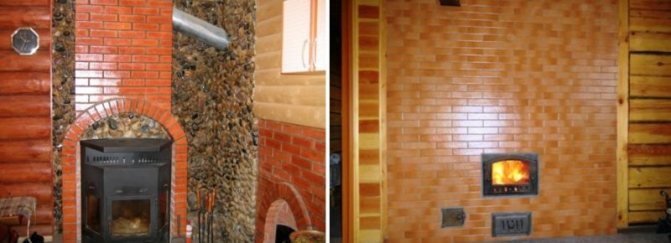

Brick heaters covered with colorless heat-resistant varnish
If the brickwork is made without sorting the stone by color, then painting the body with heat-resistant paintwork materials (paintwork material) of one or more colors will correct the situation. But, even a stove finished with a facing brick is transformed after applying, for example, a colorless paint-and-lacquer coating, which gives a juiciness and matte shade to the masonry.
Photo 1. Brick oven at the stage of laying out
- For laying out the combustion chamber, mainly fireclay refractory material is used (see photo 2), which is resistant to the effects of an open flame and can withstand temperatures up to 1500 ° C. A prerequisite is the use of products of the same type in masonry, since different materials (for example, ША and ШБ or expensive and cheap) have different thermal expansion.
Photo 2. Fireclay brick
- It is more expedient to lay the furnace massif using solid red brick (see photo 3) of the M150-M250 grades with a density in the range of 1600-1900 kg / m3. Higher densities impair the bonding of the clay-based mortar and increase the heating time of the masonry material. Products must be high-quality fired, have the correct geometry and exact dimensions.
Photo 3. Red ceramic solid brick
- It is allowed to use clinker material for lining the furnace (see photo 4). It is produced by firing at a temperature within 1200 ° C, therefore the thermal effect is not critical for it, especially since the facing layer is subject to heating to a lesser extent than the solid wood. In this case, the question of how to refine a red brick stove disappears by itself, since the clinker cladding looks more aesthetically pleasing compared to any other type of finish.
Photo 4. An example of cladding a kiln with clinker bricks
But not everything always happens the way we want it. Sometimes, due to design features, a limited budget, or a number of other reasons, you have to look for alternative refinement options. There are quite a few of them, but initially, let's figure out what it is for.

